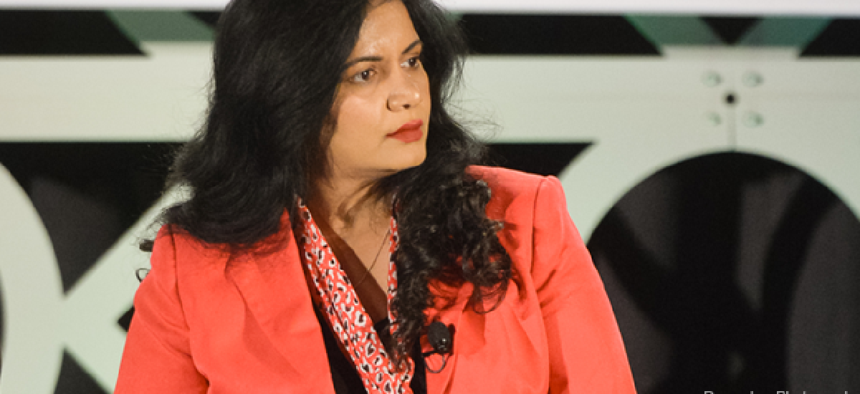Aiming to be 'the chief enabler of all government services'

Colorado CIO Suma Nallapati has a modest goal: improve the "digital touch points" for every citizen interaction.
At the recent National Association of State CIOs conference in Salt Lake City, Colorado Secretary of Technology and CIO Suma Nallapati spoke with GCN Editor-in-Chief Troy K. Schneider about her state's efforts to weave better IT into every citizen interaction -- and to convince IT talent that government work is worth exploring. The answers below have been edited for length and clarity.
What's the focal point for your team right now? What should we be looking for from Colorado?
Nallapati: The biggest thing is we want to enhance citizens' experience at every single digital touch point. That's a broad statement, and it means a lot of stuff. It's making sure that we have that differential impact every time a citizen interacts with government. Through technology, we want to enable that and orchestrate effective, efficient delivery of common services.
Is most of that plugging into and upgrading existing systems, or is there a lot of entirely new functionality being created?
Nallapati: It's a combination of both. We're looking at our legacy systems. We have 1,200-plus applications, so there's a project called Reducing Redundant Applications. We are looking at our footprint, making sure that these legacy systems are sustainable for the long tern and also building new systems.
For example, unemployment insurance modernization, that's a new project. Drivers licensing, reduction of wait times. That's a new project. Secure Colorado, implementing the next file controls and the new standards, all of those are new projects that we are embarking on.
That's a lot to tackle, and resources are always tight. Are there particular areas where you feel especially squeezed? Whether it's workforce, the technology or just basic budget levels?
Nallapati: It's a combination of all of them. It's taxpayer dollars, so we are very cognizant of how those dollars are utilized. We want to make sure that we get the biggest bang for the buck and we get a great ROI on all the investments.
Workforce is a big challenge. We have almost 20 percent of our workforce close to retirement age. We are thinking about a plan for that, as well as for getting millennials into the workforce and making sure that they feel that this a very cool place to work.
Government can be sexy -- it can be the Google or the Microsoft. We want to make sure it's a very attractive place for all generations to make a contribution.
You mentioned implementing new standards. Are there places where the state-federal interaction is really front and center? Where it goes beyond guidelines and the occasional grants?
Nallapati: Yes. FedRAMP [the federal government's cloud computing security framework] is very important. For example, our unemployment insurance project, it's all governed by FedRAMP-compliant applications. We are looking for cloud providers that are FedRAMP certified so that that those security considerations are all taken care of. And definitely there are interactions at a [Centers for Medicare and Medicaid Services] level, for the health insurance exchange and all of that.
A running thread at NASCIO was, "What is a CIO's job?" How do you define it?
Nallapati: For us it's truly, again, impacting citizens at digital touch points and also making sure that the CIO is the chief enabler of all government services. Chief innovation officer, that's part of my title too, to make sure that we are looking at not just the shiniest object, but making sure that innovation enables that kind of transformation that governments should be known for.
If you could wave a magic wand and address one hurdle or one resource crunch, what would you do to help move Colorado along?
Nallapati: I would say making sure we have more resources from all layers of government that can help us move forward. That would be legislation helping us, and the Office of State Budgeting and Planning helping us to fund projects that are not directly related to any state-funded projects but that can ultimately drive that citizen experience. And we are looking for ways we can get different sorts of funding sources like that.





